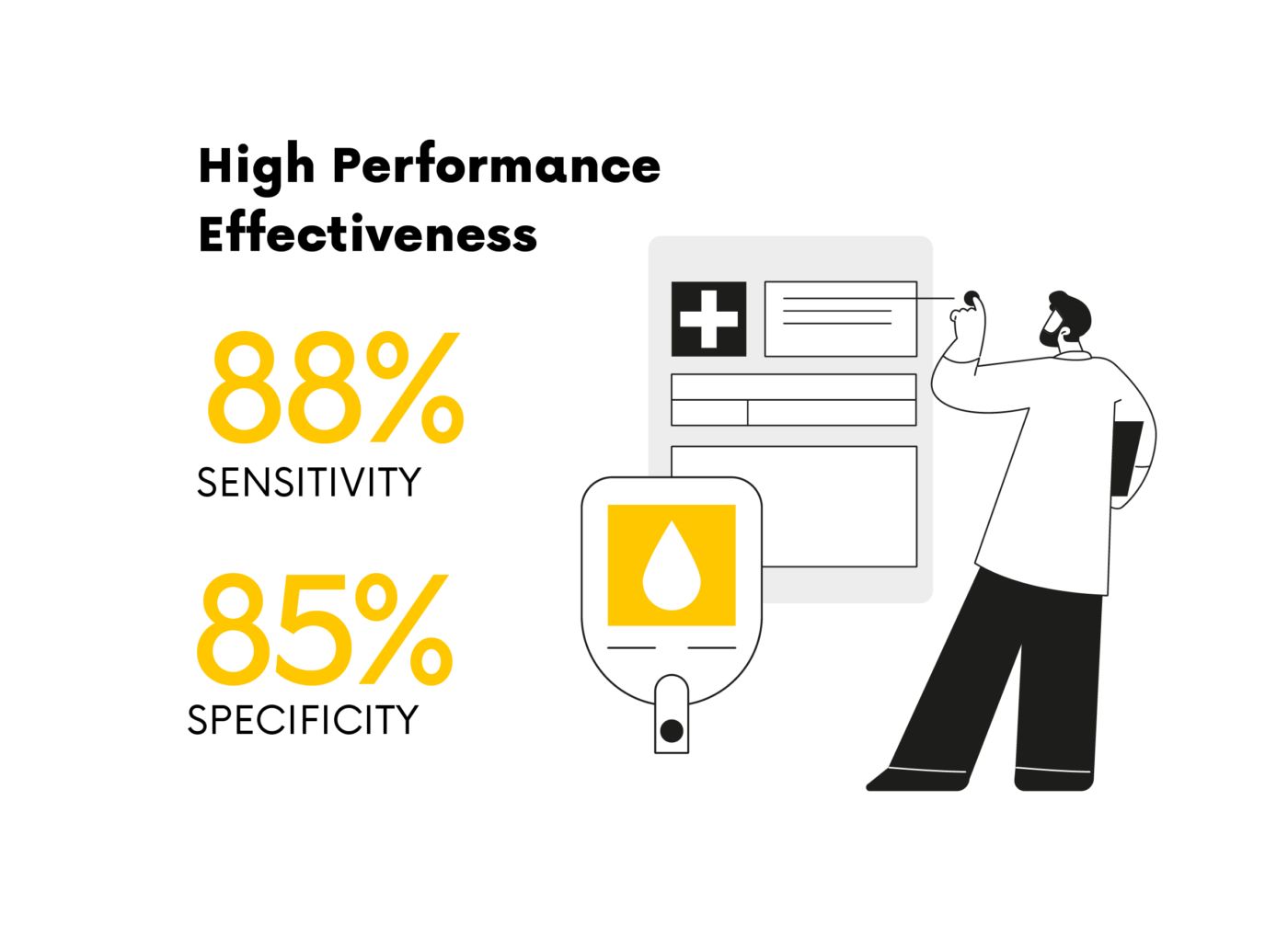This website uses cookies so that we can provide you with the best user experience possible. Cookie information is stored in your browser and performs functions such as recognising you when you return to our website and helping our team to understand which sections of the website you find most interesting and useful.

Client
A medical facility running a specialized care program for diabetic patients. The client’s goal was to implement a system capable of predicting hypoglycemia risk and automatically notifying patients about potential health threats.
Challenge
Hypoglycemia poses one of the most serious risks for individuals with diabetes.
Available solutions (such as CGM systems) are effective but expensive and inaccessible to many patients. Previously, providing care for patients with hypoglycemia required the involvement of a medical team that analyzed the course of each episode, interpreted the data, and contacted the patient if necessary. Each such analysis typically took about 10 minutes and carried the risk of delays — a follow-up call might not be made in time, which could impact the patient’s safety.
The client needed a solution that would:
- Automatically analyze data from glucose meters (without additional hardware), medication information, and patient-specific data.
- Predict the likelihood of hypoglycemia episodes.
- Send timely alerts to patients when a potential risk was identified.
- Reduce the need for constant patient monitoring by medical staff.
Solution
We developed a mobile AI/ML system for predicting hypoglycemia risk based on traditional glucometer data and patient information. Our work included:
- Predictive Model Design and Development
As part of the solution development, we carried out a full design cycle, starting with the analysis of glucometer data. A key stage involved designing a predictive model using machine learning techniques, with a particular focus on feature engineering — including glycemic variability as a critical predictor. We created a flexible ML pipeline that allowed model tuning to achieve the right balance between sensitivity and specificity, which is crucial in the context of patient safety. - Notification System Implementation
In parallel with the model, we developed a mobile notification system that sends real-time alerts to patients when an elevated risk is detected. This enables users to respond quickly and avoid dangerous episodes. - Validation and Optimization
During the clinical validation phase, we held regular consultations with a team of physicians to align the system’s functionality with the actual needs of the facility and everyday medical practice. The adjustments and optimizations introduced during this process enhanced the effectiveness of the solution and increased user acceptance.The effectiveness of our hypoglycemia prediction model is based on two key diagnostic metrics commonly used in medicine and data analysis: sensitivity and specificity.
- Sensitivity
describes how effectively the algorithm detects actual episodes of hypoglycemia. The higher the sensitivity, the greater the percentage of true hypoglycemic events correctly identified and flagged by the system — minimizing the risk of missing a critical situation. - Specificity
indicates how well the algorithm avoids false alarms. High specificity means that when there is no risk of hypoglycemia, the system does not trigger unnecessary alerts — ensuring that patients and medical staff are not burdened with unwarranted interventions.

Results
The solution was very well received by both the medical team and patients enrolled in the care program. It enabled effective prediction of hypoglycemia risk and automated patient notifications.
As a result, patient safety significantly improved, along with their overall quality of life. The development process and collaboration with the client ran smoothly, with ongoing monitoring and knowledge-sharing from our team, which facilitated successful implementation and future use of the system.

Shape Recognition Automation Using Machine Learning – Optimizing Production Costs at a Toronto Plant
Design, Development, DevOps or Cloud – which team do you need to speed up work on your projects?
Chat with your consultation partners to see if we are a good match.






